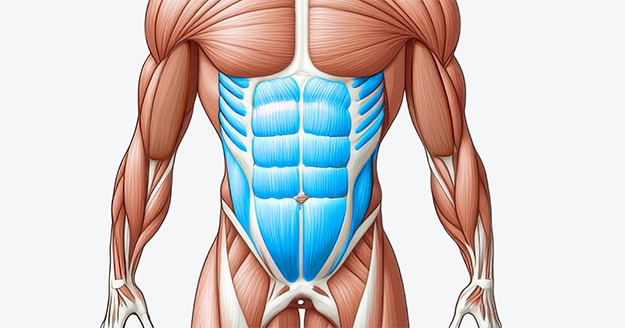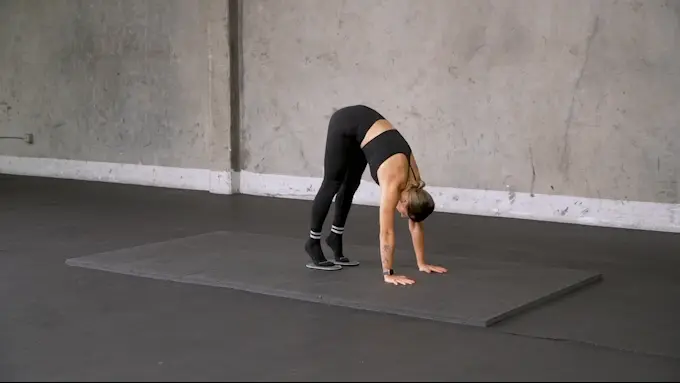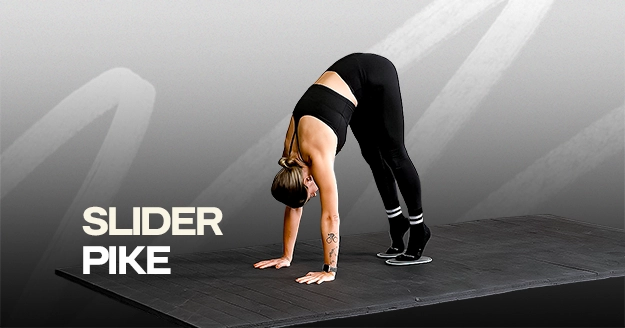Exercise Profile
Slider Pike Overview
The Slider Pike is a versatile and challenging core exercise that combines strength, stability, and mobility in one fluid motion. Its primary target is the rectus abdominis, one of the abdominal muscles.
It is suitable for intermediate to advanced fitness levels, as it requires a solid foundation of strength and technique. Beginners can modify the exercise by reducing the range of motion or practicing similar moves like mountain climbers or plank to pike.
The Slider Pike offers numerous benefits, including enhanced core strength and stability, crucial for maintaining proper posture and preventing lower back pain. Incorporating the Slider Pike into a workout routine can elevate core training to the next level.

Slider Pike Instructions
Step 1: Place a slider under the balls of each foot. Put your hands beneath your shoulders while you’re on your hands and knees. Then, stretch your arms and legs.
Step 2: Ensure your spine remains neutral. Keep your core engaged.
Step 3: Keeping your legs extended, push your hips toward the ceiling and move your feet forward steadily until your body becomes an inverted “V.”
Step 4: Then, slide your feet backward until your body forms a straight line from head to ankles.

Common Slider Pike Variations
The Slider Pike is a versatile exercise with several variations that can modify its intensity, emphasize different muscle groups, or adapt to varying fitness levels. Below are some common variations:
Slider Pike Tips
- Keep your abdominal muscles fully engaged throughout the movement to maintain stability and protect your lower back.
- Instead of rushing through the workout, concentrate on making controlled, deliberate motions.
- Perform the exercise on a smooth, flat surface that allows the sliders to glide easily.
Slider Pike Common Mistakes
- Letting the Hips Sag: Lower back discomfort and decreased core engagement can result from allowing the hips to sink too low during the plank posture.
- Improper Hand Placement: Shoulder instability and form compromise might result from placing your hands too far forward or too closely together.
- Pushing Beyond Your Level: Attempting too many reps or advanced variations without building foundational strength can result in bad form and possible harm.
Frequently Asked Questions
How can I make the Slider Pike easier?
To make it easier, reduce the range of motion or perform the exercise with your hands elevated on a bench or blocks for added support.
Is the Slider Pike suitable for beginners?
The Slider Pike is best suited for intermediate to advanced fitness levels due to its core strength and stability requirements. The exercise can be modified for beginners by starting with a simpler form, such as knee tucks, or limiting the range of motion.
Can the Slider Pike hurt my lower back?
If performed with poor form, such as sagging hips or overarching the back, the Slider Pike can strain the lower back. To avoid injury, keep your spine neutral and engage your core.
Post your post-workout selfies in IG and tag @trainestapp, #trainest, or DM them to us to get a shoutout on Trainest Stories!


